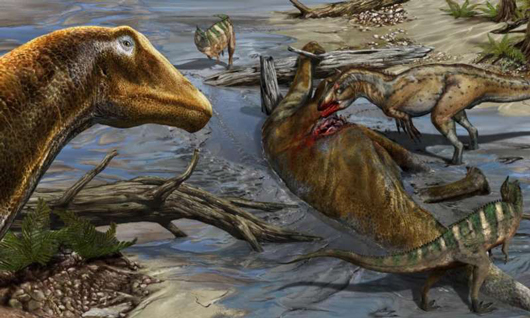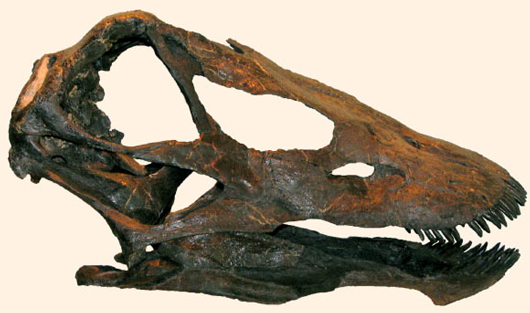Whipping Up Interest in Whiplash Dinosaurs
New Species of Diplodocid Dinosaur – Galeamopus pabsti
Writing in the academic journal “Peer J”, palaeontologists Emanuel Tschopp and Octávio Mateus (Universidade Nova de Lisboa), have identified a new species of diplodocid dinosaur within the Galeamopus genus. The dinosaur has been named Galeamopus pabsti. The fossils, which come from the Upper Jurassic Morrison Formation, specifically the Howe-Scott Quarry in the northern Bighorn Basin in Wyoming, (USA), further demonstrate the diversity of sauropods associated with the Late Jurassic fauna of western North America.
A New Species of Diplodocid Dinosaur
Picture credit: Davide Bonadonna with additional annotation by Everything Dinosaur
The Galeamopus Genus
Excavation began in 1995, by a Swiss field team led by palaeontologists Dr Hans-Jakob ‘Kirby’ Siber and Dr Ben Pabst (The Dinosaur Museum (Sauriermuseum) in Aathal, Switzerland). The trivial name, honours Dr Pabst in recognition of his contribution to dinosaur fossil preparation and exhibition mounting.
This is the second member of the Galeamopus genus to be identified, the first species G. hayi, was erected in 2015, when Emanuel Tschopp and Octávio Mateus, along with colleagues from Oxford University and the Raymond M. Alf, Museum of Palaeontology, (Claremont, California, USA), published a paper that resurrected the genus Brontosaurus following an extensive review of the Diplodocidae.
For an article on the 2015 paper: The Return of Brontosaurus.
Nearly Complete Fossil Specimen Just Missing the Tail
Importantly, much of the skull, although broken apart, was collected along with around the majority of the anterior portion of the skeleton. The presence of fossilised wood and freshwater bivalves indicated that this individual had come to rest in a stream channel. The skull has helped to assign a new species within the Galeamopus genus and the robust limb bones, such as the very sturdy upper arm bone (humerus), helps to distinguish the Galeamopus genus from the more gracile and slender Diplodocus.
Dr Emanuel Tschopp, who holds a number of academic posts including a position at the University of Turin, commented that the bones represent a young adult and that this dinosaur could have reached lengths in excess of twenty-seven metres. Bite marks on the ribs and shed theropod teeth found in association with the bones suggest that the dinosaur’s carcase was scavenged before it was finally buried.
A Late Jurassic Scene – Galeamopus pabsti Scavenged by Theropods
Picture credit: Davide Bonadonna
Galeamopus pabsti
Dr Tschopp stated:
“Diplodocids are among the best-known sauropod dinosaurs. Numerous specimens of currently fifteen accepted species belonging to ten genera have been reported from the Late Jurassic to Early Cretaceous of North and South America, Europe, and Africa. However, the highest diversity is known from the Upper Jurassic Morrison Formation of the western United States, a recent review [the 2015 paper] recognised twelve valid, named species, and possibly three additional, yet unnamed ones.”
A View of the Reconstructed Skull of Galeamopus pabsti
Picture credit: Emanuel Tschopp and Octávio Mateus
A Long Tail?
Although, the tail bones are missing, the scientists are confident that like all the other diplodocids, Galeamopus pabsti had a long tail, which in this case, represents more than half of the animal’s total body length. This long whip-like tail may have been used to help herd members keep in contact with each other or perhaps it had a role in defence. If attacked these dinosaurs might have lashed out with their tails, or perhaps moved them so quickly that they would have made a sonic boom (breaking the sound barrier).
Visit the Everything Dinosaur website: Everything Dinosaur.




